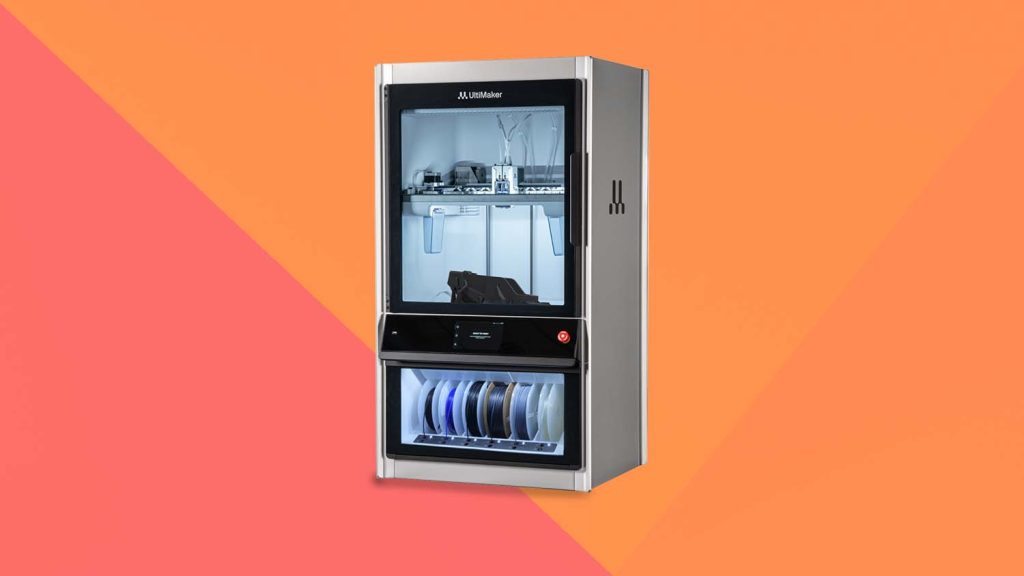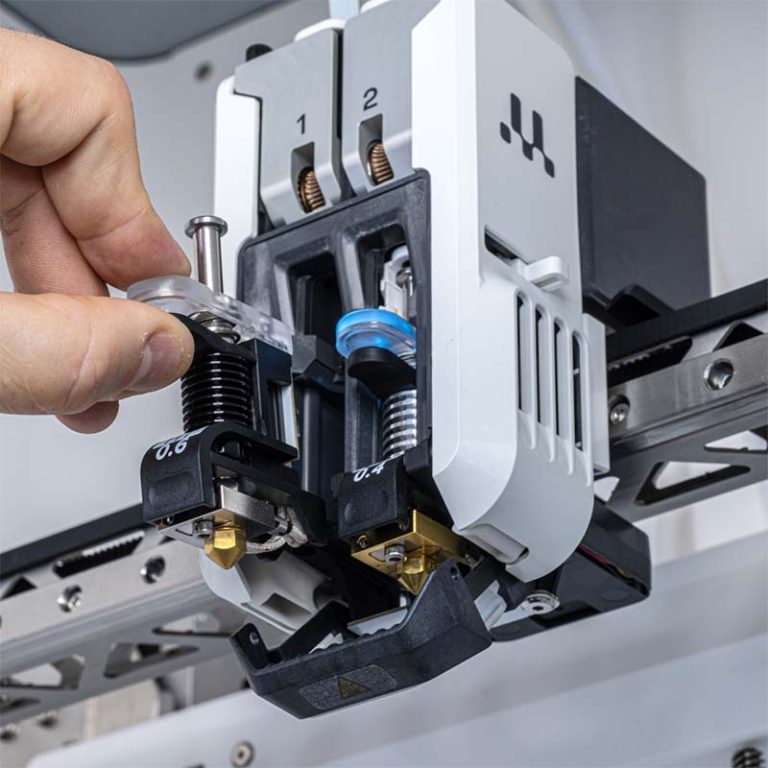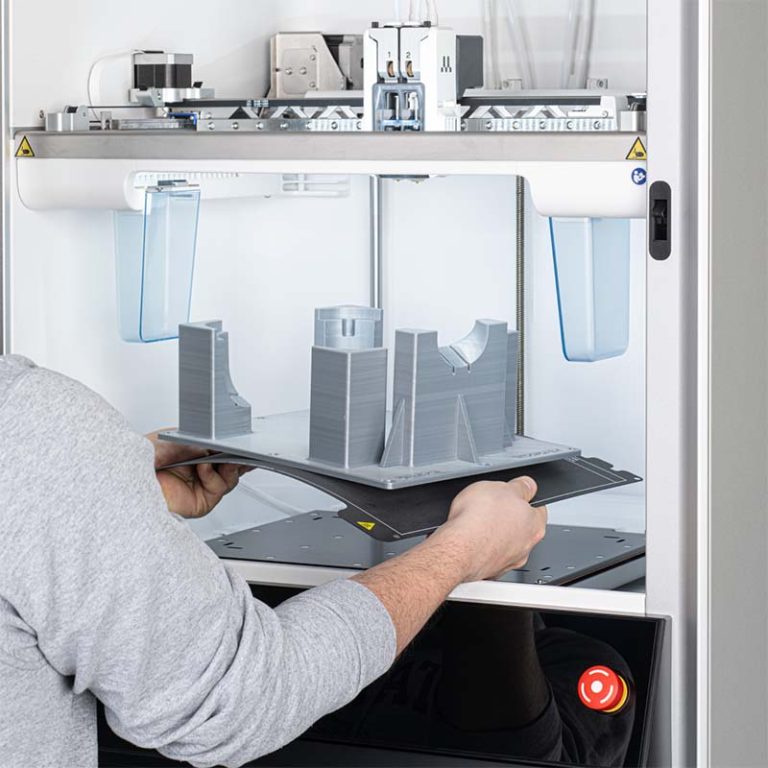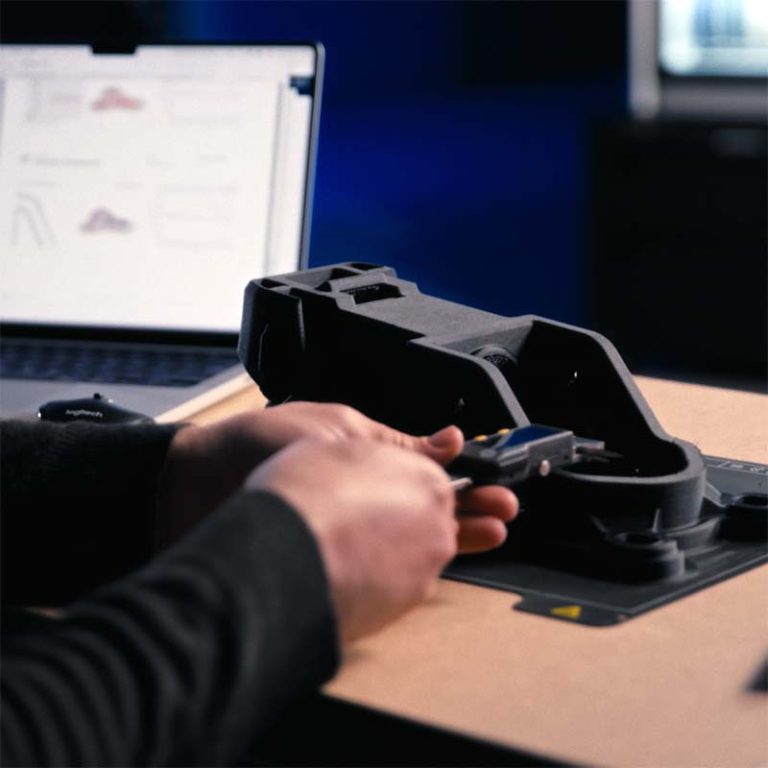The UltiMaker Factor 4 launch signals a shift in the company’s positioning, stepping away from the desktop 3D printing landscape and hitting the factory floor with a 120kg machine built from the ground-up to support engineering-grade materials.
With direct-drive dual extrusion, onboard print process reporting, temperature-controlled build volume, and other enterprise features, it has been built to achieve high levels of predictability and minimal variance. UltiMaker states that in testing the Factor 4 achieved over 95% print completion success and dimensional accuracy ‘within ± 0.2 mm or ± 0.2% of the feature nominal length’, as it looks to deliver consistent results across multiple machines.
Factor 4 offers a temperature-controlled build volume of 330 x 240 x 300mm with uniform bed heating to aid consistent performance across the entire build plate. Designed for manufacturing and industrial sectors, the new high-temperature print core allows engineers to print up to 350°C, unlocking higher temperature-resistant and durable materials, such as the new UltiMaker PPS-CF, a high-temperature composite material.
The heated bed is used to control the build volume temperature up to 70°C, allowing material-specific processing conditions and consistent part quality wherever the 3D printer is located.
Most interesting is the company’s step away from the smaller desktop market, where Chinese brands like Bambu have flooded the market – including in prototyping and jigs and fixtures with its high speed FDM capabilities and low price point.
UltiMaker instead says it has built the Factor 4 to be a robust, reliable and repairable industrial unit, with the modular design allowing 30 segments of the 3D printer to be quickly swapped out (a couple of screws and connectors) in order to enable maximum uptime, and make the purchase upgradable in the future.
The 3D printer features a triple-insulated build volume, closed loop and direct-drive dual extrusion, automatic inductive bed levelling, and a PEI-coated flexible build plate, as it targets consistent production output. Combined with the H-bridge gantry and rigid metal frame, UltiMaker says the product is built allow for high-speed movement and accuracy.
An integrated, low moisture material handling bay allows users to manage their print jobs, holding up to six spools of filaments at under 15% humidity. An automatic failover capability switches between spools, ensuring uninterrupted printing.
Materials available for the Factor 4 at launch include the new UltiMaker PPS-CF and other UltiMaker-branded materials, such as PLA, Tough PLA, nylon, PETG, PET CF, and PVA. Factor 4 supports 2.85 mm filament.
With the Factor 4 costing in the region of £20,000, this is a very grown-up price for what UltiMaker clearly feels is an enterprise solution – and not simply an evolution of the S7.
https://www.youtube.com/watch?v=ltG5wV8TAy8
The company is clearly hoping to see the new model flood factories, workshops and production units, where its many clever design elements for reliable performance and part quality can provide value without need for blazing speed. However, due to the necessity for unlocking the 3D printer door between prints, automation via robot arm will not be possible. For a product hoping to signal a new chapter as a key tool for modern manufacturing, it might prove an oversight in the factory of the future.
A big plus is that the Factor 4 maintains the use of Cura. The 5.7.1 release has a new printer profile for Factor 4, customised and fine-tuned for optimal print quality and performance, so users can access over 500 settings on what remains the world’s most popular slicer.
As you would expect in a 3D printer of this price, it features a suite of sensors in the print head, build volume, and automated material loading system that provide real-time data on printer and material performance and delivers in-depth reporting after every print job, available as a pdf should you wish. This is an extra step towards ensuring easy part validation and quality control, with the 7” capacitive touch screen also showing process data in real time.
“There is an untapped potential in the 3D printing market, particularly in supporting light industrial applications,” said UltiMaker CEO Michiel Alting von Geusau. “Our commitment is to help our customers and partners identify opportunities and unlock the full capabilities of 3D printing. With Factor 4, we are offering a complete ecosystem that we believe will make a significant impact on this growing sector.”
DEVELOP3D hopes to take a closer look at the Factor 4 and bring you more details soon.
Have you read the latest issue of DEVELOP3D Magazine? Check it out free below:









